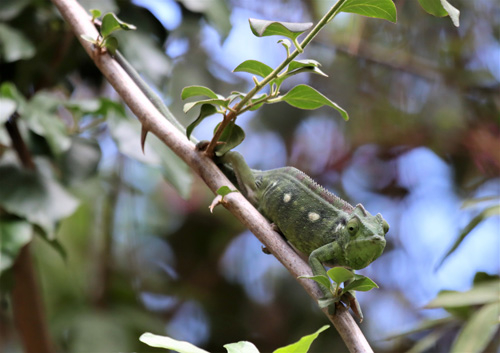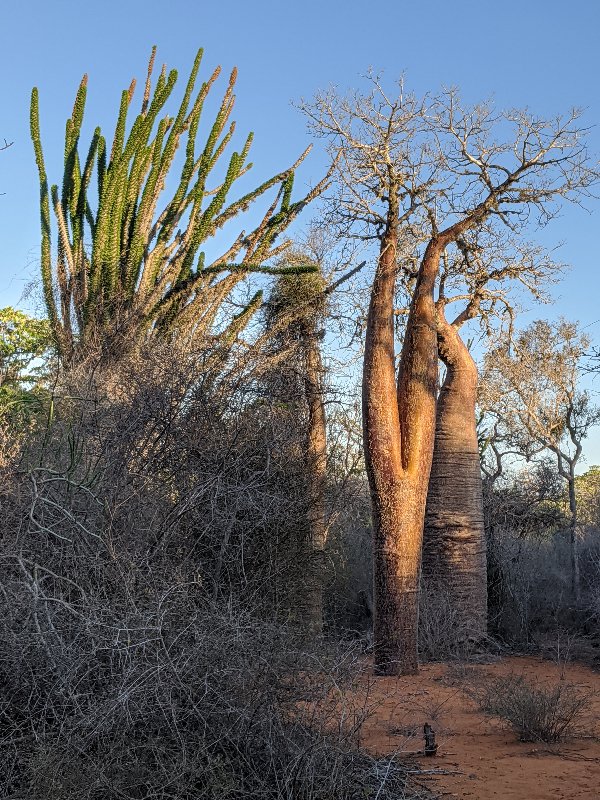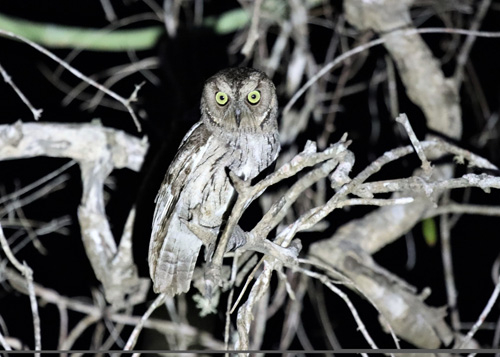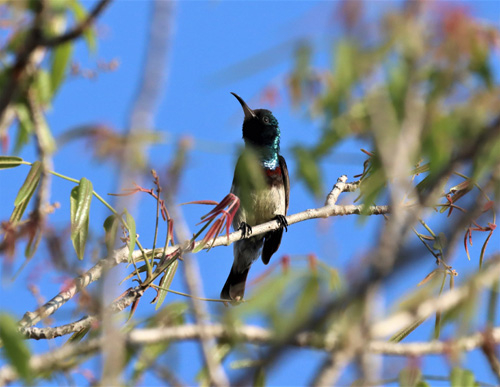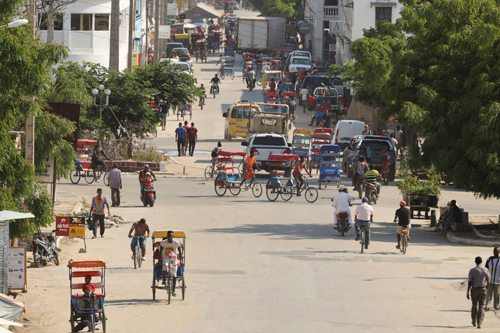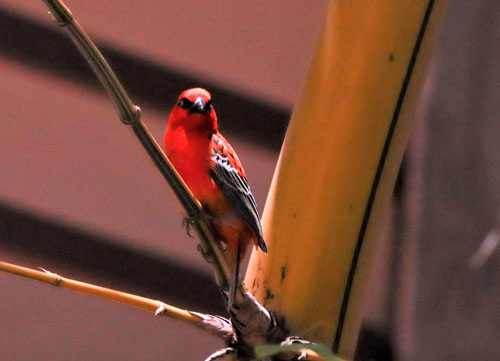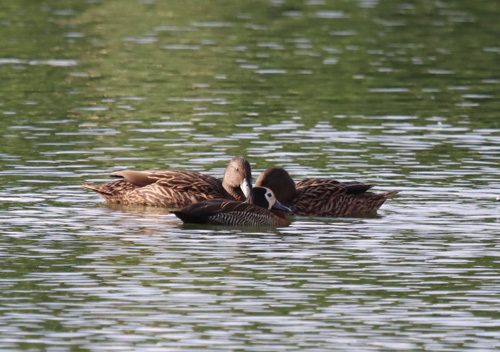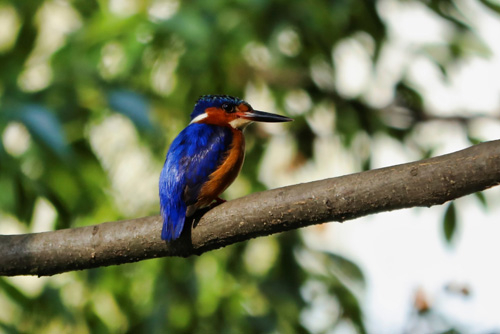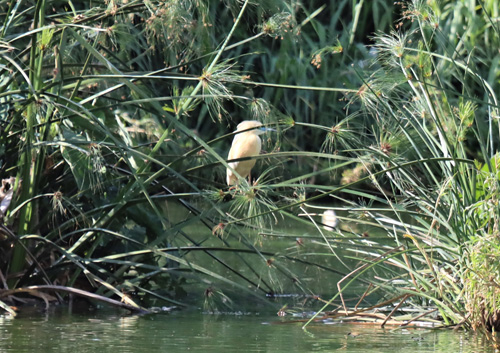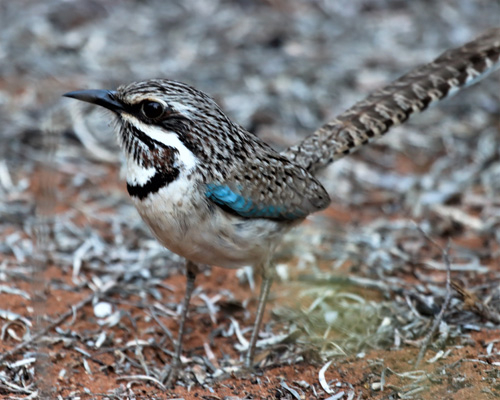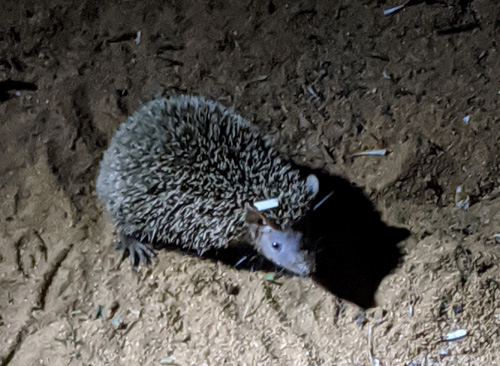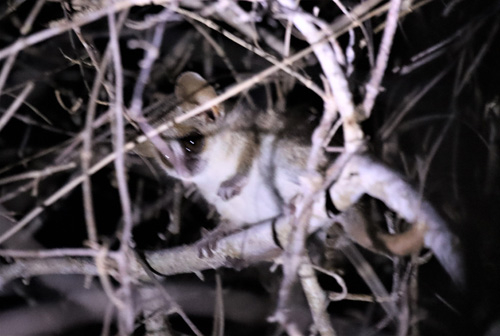The spiny forest produced the top bird of the day, (November 20), maybe of the trip, a Subdesert Mesite, one of the species comprising my 3rd new family recorded in Madagascar.
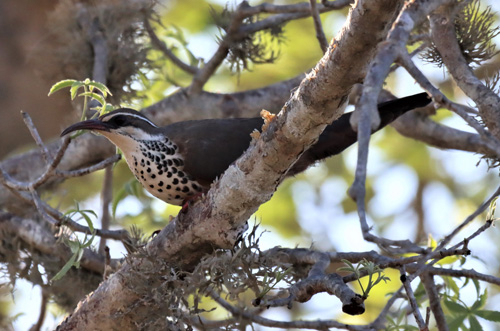
This Running Coua was another highlight of the Spiny Forest.

A shallow water area, the Ifaty wetlands, held numbers of plovers, sandpipers, herons and egrets. Efforts to find the Endemic Humblot’s Heron were unsuccessful. Madagascar Bee-eaters were common.

Here we also saw the endemic Madagascar Plover.
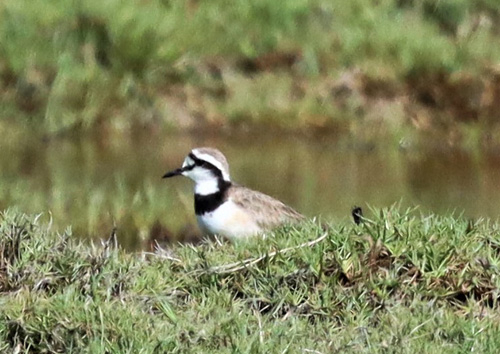
Cisticolas, including Jerys were regular during the day.
On November 21 we drove by another wetland on our way to the La Table dry bush area.
Verreaux’s Couas showed well at La Table.
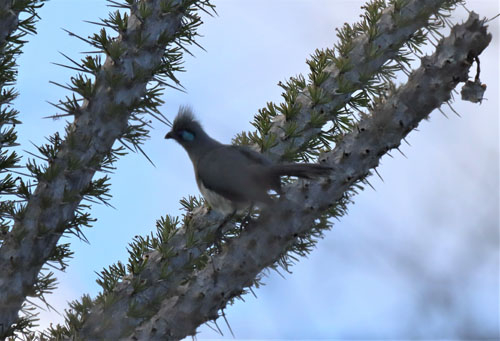
La Table also produced stunning views of a pair of Red-shouldered Vangas, a bird found only in a small area of southwest Madagascar.

[Side note: Our guide told us that a Red-shouldered Vanga was the last bird seen by Phoebe Snetzinger. In about 1980 at the age of 50, Phoebe, a resident of the Illinois/St. Louis area, was diagnosed with terminal skin cancer. She decided then to make use of her remaining days by becoming a serious birder. Her cancer went into remission several times in the next 20 years, and in the meantime she became the top birder in the (mostly male birders) world, documenting her sightings of over 8,000 of the then recognized 8,500 species. In 1999, twenty years almost to the day prior to our visit to La Table, Phoebe was killed there when the van in which she was riding overturned soon after finding the Red-shouldered Vanga.]
At La Table we also saw our first of a number of Crested Drongos.

We made a late afternoon stop at the Botanical Garden
There we found a pair of cooperative Red (Green)-capped Couas.
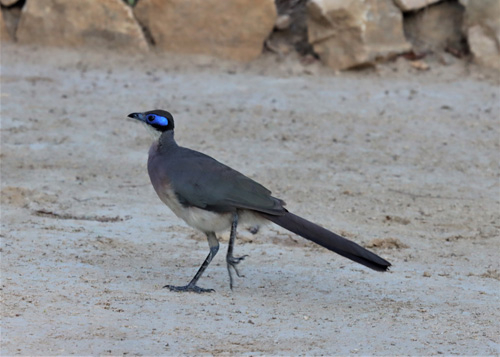
Also at the Botanical Garden was an apparently nesting Madagascar Nightjar.
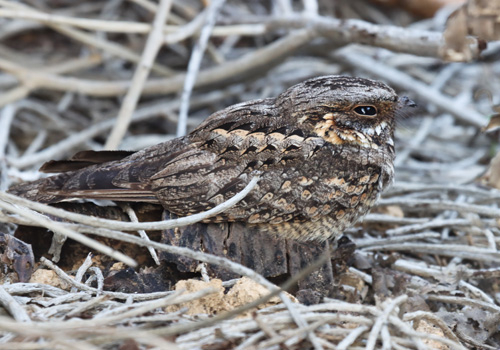
On the 22nd we made the boat trip to Nosy Ve, a small island off the southwest coast of Madagascar, in the hope of finding Crab Plovers. Crab Plovers are not restricted to Madagascar, but in my prior travels I had never seen any. This was to be my best chance of adding this single species family to my life list. Boarding the boat required first an ox cart ride from shore to boat.
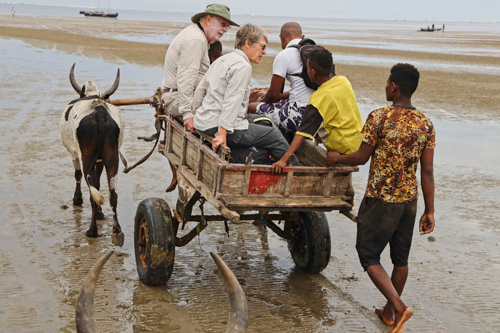
The day was perfect for an excursion into the Mozambique Channel, with light clouds, light winds and moderate temperatures. We were extremely fortunate to find 17 Crab Plovers (my 4th new target family in Madagascar) at the end of our trip, on the sand spit called Nosy Ve. Nosy Ve is not to be confused with Nosy Be at the far more popular destination for beach lovers on the northwest corner of Madagascar. Here are a couple of the Crab Plovers, sometimes found on Nosy Ve.
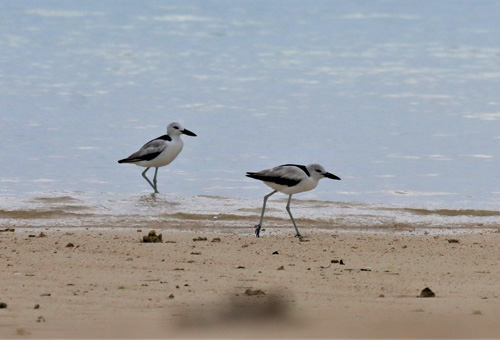
Nosy Ve also hosts large numbers of Red-tailed Tropic Birds raising their chicks, and here is one of them.
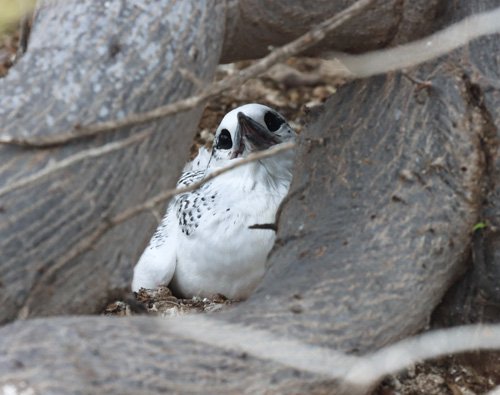
The return boat trip took us past spectacular cliffs where we finally spotted a rare Humblot’s Heron, silhouetted on a cliff by the sea.
On then to Anakao for lunch and the regular Littoral Rock Thrush. Near the café we were lucky to find at close range a pair of cute little Gray-Brown Mouse Lemurs in full daylight.
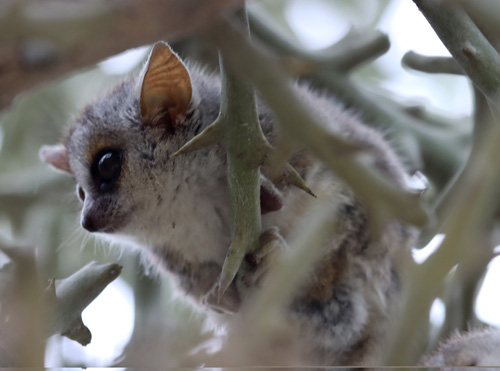
Part 3 of my Madagascar blog will cover November 23, 24 and 25, including the long drives from Tulear to Zombitse and back, the wonderful Ring-tailed Lemur experience at Isalo National Park, and an unexpected visit to a small Mahafaly village along the way back to Tulear.

